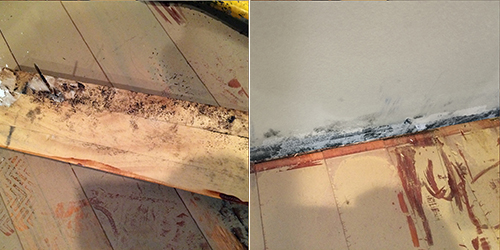Have you been in search of help and advice on Preventing Water Damage in the Bathroom?

The restroom is extremely at risk for wet accumulation and prospective water damages due to the frequent use of water in it. This post offers basic evaluation strategies to help finding water damage dangers.
The constant use water in the washroom makes it extremely susceptible for wet build-up and also possible water damage. By evaluating it regularly, you can minimize water associated problems.
The complying with set of assessments is easy to do and should be done when in every three months in order to keep your bathroom in good shape and also to prevent prospective water damages triggered by the bath tub, the shower, pipe joints as well as plumbing, sinks, closets, as well as the commode
Do not neglect carrying out these examinations and be complete while performing them. Bear in mind that these basic inspections can save you a great deal of cash by providing early signs for water damage
Sinks as well as Cabinets
Sinks and also cabinets are subjected to dampness and moisture day-to-day and are commonly overlooked. Examine on a regular basis under the sink and on the countertop over it. Fix any drip in the trap as it might suggest drain issues. Check out the sink, slow draining pipes might show a blocked drain. Replace sink seals if they are split or loosened.
Bathtub and Shower
The shower as well as bath tub call for special attention as well as upkeep. Examine the floor tiles as well as replace if broken. Make certain that there is no missing out on grout between the ceramic tiles. Evaluate and also replace broken caulking at joints where the wall surfaces fulfill the flooring or the bathtub. Blocked drains as well as pipelines troubles will avoid the tub from drying out and also might show significant troubles under the bath tub. Consult with a professional instantly to prevent structural damage. Take note of discolorations or soft areas around the tub walls as they may suggest an interior leak.
Plumbing
Signs for water damage are hard to spot because many pipelines are mounted inside the wall surfaces.
Pay unique focus to floor covering as well as wall surfaces wetness as well as stains as they may indicate an invisible plumbing problem. Examine dampness degrees in adjacent spaces as well.
The Toilet
The toilet is an at risk water joint. Examine the water lines and search for leaks around the toilet seat, in the hose, and under the water tank. If you spot any signs of moisture on the floor around the toilet, check for leakages in the toilet edge and also storage tank seals.
Know that hanging bathroom bowl deodorants boosts the chances for clogs.
10 TIPS TO PREVENT WATER DAMAGE IN THE BATHROOM
The average household uses approximately 80-100 gallons of water per person per day. For a family of 4, that's almost 2,500 gallons of water a week! The largest portion of this consumption comes from bathroom use. Flushing the toilet uses the most water, followed by taking a shower or bath. With that much water running through the home, water damage in the bathroom is bound to happen. Knowing how to spot signs of a water leak is essential to preventing long-term damage. This guide provides you with tips to reduce the impact of water damage on your bathroom.
CAUSES OF BATHROOM WATER DAMAGE
Pipe breaks are the most common cause of water damage we see in our daily jobs. The age of a pipe plays a large role in a pipe break as well as corrosion. Over time, the metal begins to break down, allowing water to escape. Frozen pipe breaks are also a concern in the winter months. Toilet overflows caused by paper products or children flushing inappropriate items. Degraded caulking around the toilet or bathtub can allow water seepage, sometimes behind the fixture, into the subfloor or walls. Condensation forms when the water in a pipe is cooler than the air temperature. Beads of water form on the exterior of the pipes, sometimes so much so that the water begins to drip and pool below. Sink or shower backups created by poor drainage. HOW TO PREVENT WATER DAMAGE IN YOUR BATHROOM
Inspect your toilet supply line for worn or frayed hoses and replace them as needed. Winterize your plumbing to prevent a frozen pipe break. Use vent fans to prevent condensation that can lead to mold growth. Routinely check and replace degraded caulking around your toilet or bathtub. Increase the temperature in your toilet tank and insulate your pipes during the warm summer months to keep condensation from forming. Use child safety locks on the toilets. Flush only toilet paper. "Flushable" wet wipes are actually not good for your plumbing system. Additionally, feminine hygiene products should not be flushed. Prevent water from escaping the tub or shower. Make sure shower curtains are in good condition. Inspect shower doors and replace the seal strip if necessary. Wipe up any water that accumulates on the floor and use bath mats. Water left to sit can cause damage to the tiles and flooring. Refrain from using bath products containing heavy oils to avoid a clogged drain.

Hopefully you enjoyed reading our topic on How to Prevent Bathroom Water Damage. Thanks a lot for taking a few minutes to browse our short article. For those who liked our blog post kindly do not forget to share it. I am grateful for your time. Don't hesitate to pay a visit to our website back soon.
Hire A Pro